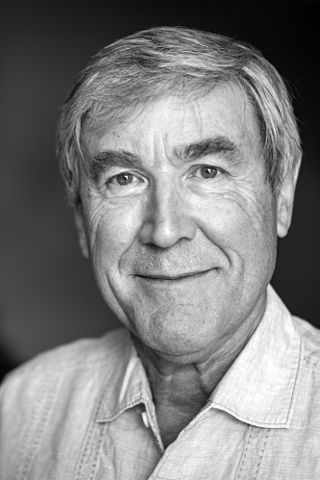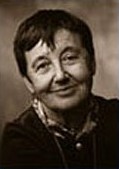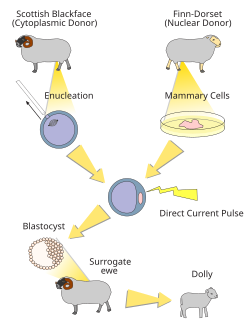
A quantum computer is a computer that takes advantage of quantum mechanical phenomena.
The Sokal affair, also called the Sokal hoax, was a demonstrative scholarly hoax performed by Alan Sokal, a physics professor at New York University and University College London. In 1996, Sokal submitted an article to Social Text, an academic journal of cultural studies. The submission was an experiment to test the journal's intellectual rigor, specifically to investigate whether "a leading North American journal of cultural studies—whose editorial collective includes such luminaries as Fredric Jameson and Andrew Ross—[would] publish an article liberally salted with nonsense if (a) it sounded good and (b) it flattered the editors' ideological preconceptions."

Edward Witten is an American mathematical and theoretical physicist. He is a professor emeritus in the school of natural sciences at the Institute for Advanced Study in Princeton. Witten is a researcher in string theory, quantum gravity, supersymmetric quantum field theories, and other areas of mathematical physics. Witten's work has also significantly impacted pure mathematics. In 1990, he became the first physicist to be awarded a Fields Medal by the International Mathematical Union, for his mathematical insights in physics, such as his 1981 proof of the positive energy theorem in general relativity, and his interpretation of the Jones invariants of knots as Feynman integrals. He is considered the practical founder of M-theory.

Comet Hyakutake is a comet discovered on 31 January 1996. It was dubbed the Great Comet of 1996; its passage to within 0.1 AU (15 Gm) of the Earth on 25 March was one of the closest cometary approaches of the previous 200 years. Reaching an apparent visual magnitude of zero and spanning nearly 80°, Hyakutake appeared very bright in the night sky and was widely seen around the world. The comet temporarily upstaged the much anticipated Comet Hale–Bopp, which was approaching the inner Solar System at the time.
This is a timeline of quantum computing.

Alan David Sokal is an American professor of mathematics at University College London and professor emeritus of physics at New York University. He works in statistical mechanics and combinatorics. He is a critic of postmodernism, and caused the Sokal affair in 1996 when his deliberately nonsensical paper was published by Duke University Press's Social Text. He also co-authored a paper criticizing the critical positivity ratio concept in positive psychology.
The year 2003 was an exciting one for new scientific discoveries and technological breakthroughs progress in many scientific fields. Some of the highlights of 2003, which will be further discussed below, include: the anthropologic discovery of 350,000-year-old footprints attesting to the presence of upright-walking humans; SpaceShipOne flight 11P making its first supersonic flight; the observation of a previously unknown element, moscovium was made; and the world's first digital camera with an organic light-emitting diode (OLED) display is released by Kodak.
The year 2002 in science and technology involved some significant events
The year 2004 in science and technology involved some significant events.

Paul Charles William Davies is an English physicist, writer and broadcaster, a professor in Arizona State University and director of BEYOND: Center for Fundamental Concepts in Science. He is affiliated with the Institute for Quantum Studies in Chapman University in California. He previously held academic appointments in the University of Cambridge, University College London, University of Newcastle upon Tyne, University of Adelaide and Macquarie University. His research interests are in the fields of cosmology, quantum field theory, and astrobiology.

Orchestrated objective reduction is a theory which postulates that consciousness originates at the quantum level inside neurons, rather than the view that it is a product of connections between neurons. The mechanism is held to be a quantum process called objective reduction that is orchestrated by cellular structures called microtubules. It is proposed that the theory may answer the hard problem of consciousness and provide a mechanism for free will. The hypothesis was first put forward in the early 1990s by Nobel laureate for physics, Roger Penrose, and anaesthesiologist Stuart Hameroff. The hypothesis combines approaches from molecular biology, neuroscience, pharmacology, philosophy, quantum information theory, and quantum gravity.
The science wars were a series of scholarly and public discussions in the 1990s over the social place of science in making authoritative claims about the world. Encyclopedia.com, citing the Encyclopedia of Science and Religion, describes the science wars as the
Quantum metrology is the study of making high-resolution and highly sensitive measurements of physical parameters using quantum theory to describe the physical systems, particularly exploiting quantum entanglement and quantum squeezing. This field promises to develop measurement techniques that give better precision than the same measurement performed in a classical framework. Together with quantum hypothesis testing, it represents an important theoretical model at the basis of quantum sensing.

Richard Neil Zare is the Marguerite Blake Wilbur Professor in Natural Science and a Professor of Chemistry at Stanford University. Throughout his career, Zare has made a considerable impact in physical chemistry and analytical chemistry, particularly through the development of laser-induced fluorescence (LIF) and the study of chemical reactions at the molecular and nanoscale level. LIF is an extremely sensitive technique with applications ranging from analytical chemistry and molecular biology to astrophysics. One of its applications was the sequencing of the human genome.

Denise Schmandt-Besserat is a French-American archaeologist and retired professor of art and archaeology of the ancient Near East. She spent much of her professional career as a professor at the University of Texas. She is best known for her work on the history and invention of writing. While her research is highly cited, it has been controversial among scholars. The controversies, as detailed below, concern the interpretation of early tokens, particularly the complex ones; however, the idea that writing emerged out of the counting, cataloging, management, and transactions of agricultural produce has been largely accepted.
Number systems have progressed from the use of fingers and tally marks, perhaps more than 40,000 years ago, to the use of sets of glyphs able to represent any conceivable number efficiently. The earliest known unambiguous notations for numbers emerged in Mesopotamia about 5000 or 6000 years ago.
The quantum mind or quantum consciousness is a group of hypotheses proposing that local physical laws and interactions from classical mechanics or connections between neurons alone cannot explain consciousness, positing instead that quantum-mechanical phenomena, such as entanglement and superposition that cause nonlocalized quantum effects, interacting in smaller features of the brain than cells, may play an important part in the brain's function and could explain critical aspects of consciousness. These scientific hypotheses are as yet unvalidated, and they can overlap with quantum mysticism. Empirical evidence is against the notion of quantum consciousness, experiments do not support hypotheses of quantum mind.

Jürg Martin Fröhlich is a Swiss mathematician and theoretical physicist. He is best known for introducing rigorous techniques for the analysis of statistical mechanics models, in particular continuous symmetry breaking, and for pioneering the study of topological phases of matter using low-energy effective field theories.









